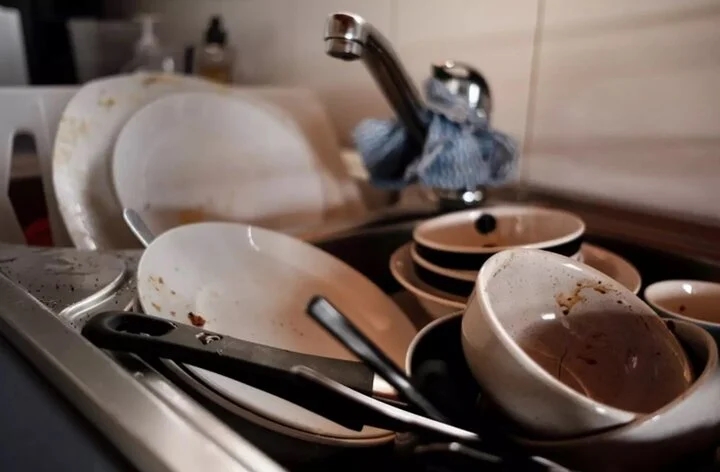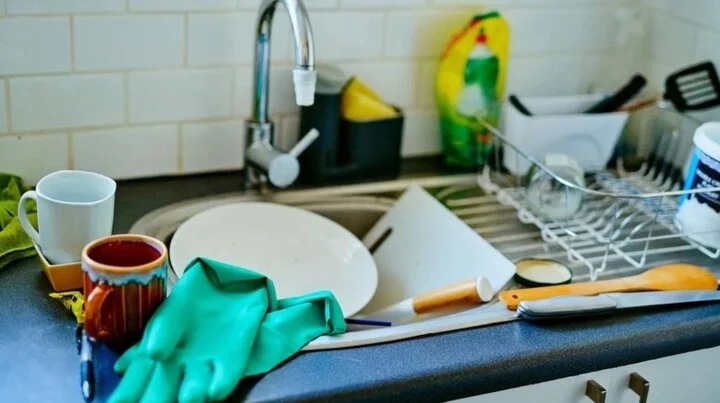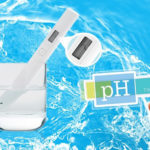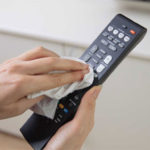Washing dishes may seem like a simple and harmless daily task, but if not done properly, it can have negative consequences for your health and that of your family.
Harmful mistakes when washing dishes
Many people make the following bad habits, and their effects are much greater than they imagine:
Piling dirty dishes in the sink
Many people have the habit of soaking all the dirty dishes in the sink without washing them immediately after eating. This action creates favorable conditions for bacteria to grow. Bacteria can start to invade the dishes within 1-4 hours and thrive after 8-18 hours. Piling dirty dishes on top of each other also risks cross-contamination, making cleaning more difficult.

Soaking all the dirty dishes in the sink for several hours is a harmful mistake that many people make when washing dishes. (Photo: Getty)
The correct way is to sort the dishes according to the type of food and wash them immediately after eating. You should wash the oil-free dishes first, then the greasy ones. Dishes containing cooked food should be washed first, and dishes containing raw meat or raw food should be washed last.
Pouring dish soap directly on dirty dishes
This is also a harmful mistake that many people make when washing dishes. Pouring dish soap directly on dirty dishes does not help remove grease better, but it wastes water and abuses detergents. If you don’t rinse thoroughly afterwards, the detergent residue on the dishes can enter your body and cause digestive symptoms such as diarrhea and stomach ache.
You should dilute the dish soap with a little water before washing. Use this mixture to wash dishes to ensure safety and save money.
Overusing detergents
Detergents often contain artificial additives, and overuse can leave chemical residues on dishes.
To minimize their harm, you can use natural detergents such as rice water, salt, or lemon peel to wash dishes. If using dish soap, use a moderate amount and rinse the dishes several times under running water to remove all detergent residues.
Scrubbing chopsticks together
Many people have the habit of scrubbing a bunch of chopsticks together because they think it’s a quick and convenient way to clean them. In fact, this action can damage the outer protective layer of the chopsticks, creating small cracks that make the surface of the chopsticks rough, providing an ideal environment for microorganisms to grow, and can cause cross-contamination of bacteria from one person’s chopsticks to another.
You should use a dish sponge to clean each chopstick, removing grease and soap suds. If the chopsticks are greasy and difficult to clean, you can rinse them with hot water before washing and rinsing them again, then dry them or let them air dry.
Using the same dish sponge for too long
One of the most common harmful mistakes when washing dishes is not changing the dish sponge frequently. According to a study by Charles Gerba, a microbiologist at the University of Arizona, there are about 10 million bacteria/2.54cm² on a dish sponge, while a toilet seat has only about 50 bacteria/2.54cm². Bacteria on the dish sponge multiply and divide every 20 minutes, so it’s much dirtier than a toilet seat.
It’s best to replace the dish sponge every two weeks. In the kitchen, towels should also be categorized, with separate towels for hand drying and kitchen use to prevent the spread of bacteria between them. The dish sponge should also be thoroughly dried after use.

Some habits that seem harmless when washing dishes can actually pose health risks. (Photo: Getty)
Putting away dishes before they’re completely dry
Not drying or air-drying dishes before putting them away creates a damp environment, which is ideal for bacteria and mold to grow. In addition, a damp environment can also produce serious carcinogens such as aflatoxin.
After washing the dishes, make sure to dry and air them in the sun before putting them away in a cool, dry place. Choose a chopstick holder with air holes to prevent water from pooling.
Not disinfecting dishes
No matter how thoroughly you wash your dishes, you can’t completely remove all bacteria. Regular disinfection is the best way to eliminate bacteria completely.
If possible, use a dishwasher to sterilize dishes at high temperatures. If you don’t have a dishwasher, you can soak the dishes in boiling water for about 3 to 5 minutes to disinfect them.
Using the same set of dishes for years
All items have a certain lifespan. Dishes that have been used for many years may have cracks or breaks, so they should be replaced to ensure safety, especially wooden chopsticks and cutting boards, which are prone to mold, termites, and scratches, becoming a breeding ground for bacteria.
Washing dishes correctly not only keeps them clean but also protects the health of you and your family. Avoid these harmful mistakes when washing dishes, and review and adjust your dishwashing habits today to protect your family’s health and ensure a clean and hygienic kitchen environment.
According to VTC News


































